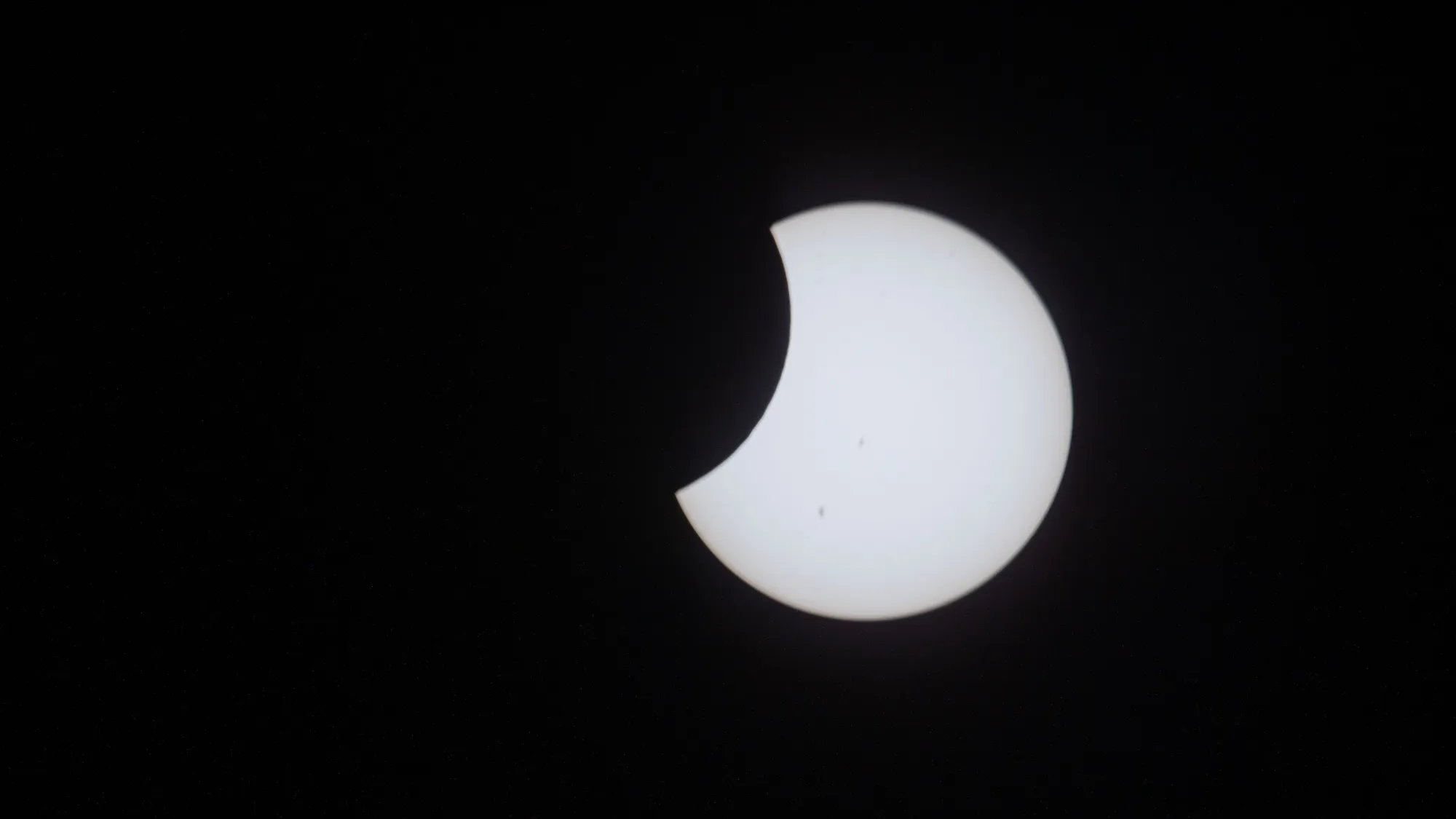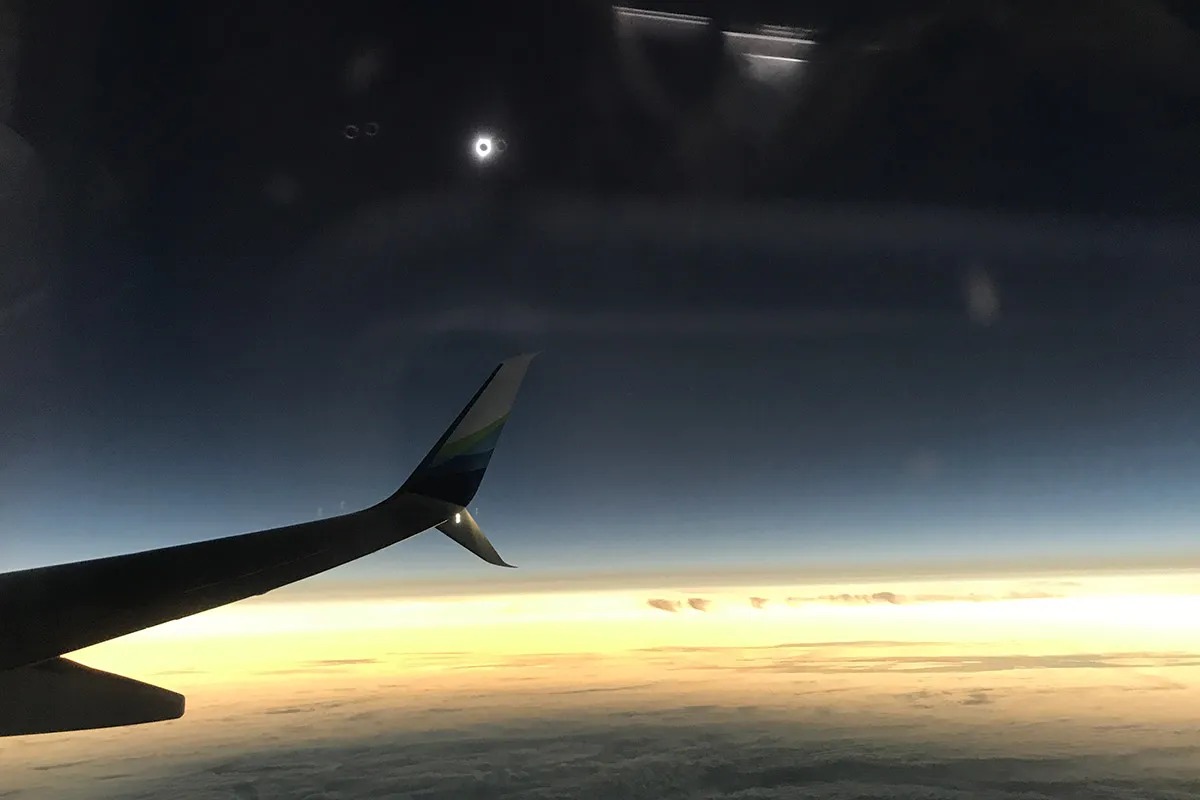Why ISS astronauts won't know where to look for next total solar eclipse for a while
The cameras may be ready, but it won't be clear where to point them.

NASA astronauts plan to watch the total eclipse from space on April 8, but there will be some complications.
The Expedition 71 crew, which will include SpaceX's Crew-8 slated to launch no earlier than March 2, is finalizing its solar eclipse observing schedule. The goal is to catch the event from the International Space Station as it sweeps over the United States on April 8. However, NASA astronauts told Space.com on Jan. 25 that, while the cameras are ready and the astronauts are trained, timing can't be decided for a long time.
This is because the ISS' precise orbit isn't guaranteed. For instance, the station may need to dodge space debris, Crew-8 NASA astronaut Michael Barratt told Space.com. That'd inevitably adjust its trajectory. "Every once a while, we have to tweak the orbit of our station to avoid hitting stuff," Barratt said. "The closer we get [to April], the more we'll be able to sharpen our approach. We'll know what our viewing angle is going to be."
Crew-8 will spend roughly half a year on the International Space Station (ISS), and the upcoming total solar eclipse will occur during this stay. On board will be NASA astronauts Matthew Dominick (commander), Barratt (pilot) and Jeanette Epps (mission specialist), along with mission specialist Alexander Grebenki, of the Russian space agency Roscosmos.
Related: NASA selects astronauts for SpaceX Crew-8 mission to International Space Station
Solar eclipses happen when the moon passes in front of the sun from Earth's perspective. A total solar eclipse occurs when the moon is close enough in its orbit around our planet to cover the entire sun. The next total solar eclipse passes across much of the U.S. as well as some parts of Canada and Mexico. It'll take place on April 8; you can get details about how to safely observe the event here.
This won't be Barratt's first time observing an eclipse while aloft. When the last total solar eclipse went across the U.S. in 2017, he was on board an Alaska Airlines charter flight observing it at 40,000 feet. "The shadow was just speeding, hurtling towards the mainland. It was really amazing to me," he recalled.
Breaking space news, the latest updates on rocket launches, skywatching events and more!
As the astronauts get ready to aim their cameras, they are enjoying the progressions in digital technology since the last 2017 total eclipse in the U.S., Barratt said in a press conference at NASA's Johnson Space Center held on Jan. 25.
"The big difference now is the camera complement (and) the imagery will be, I think, much more crisp and much, much more capable," Barratt said, adding, "we will stand ready on our very unique platform to capture it the best we can."
On the Roscosmos side of the ISS, Grebenkin said in a separate interview that discussions are also ongoing with the Russians regarding how to best approach the event.
"I didn't really train specifically for the observing," Grebenkin said, speaking in Russian through an English interpreter. "I do know that it's going to happen, and I am planning to do my best to take pictures and also observe the event itself."
If you're looking to observe the solar eclipse on Earth, we have you covered. Our guide on how to observe the sun safely guide tells you what you need to know to look at the sun. We also have a guide to solar eclipse glasses, and how to safely photograph the sun if you'd like to get practicing before the big day.

Elizabeth Howell (she/her), Ph.D., was a staff writer in the spaceflight channel between 2022 and 2024 specializing in Canadian space news. She was contributing writer for Space.com for 10 years from 2012 to 2024. Elizabeth's reporting includes multiple exclusives with the White House, leading world coverage about a lost-and-found space tomato on the International Space Station, witnessing five human spaceflight launches on two continents, flying parabolic, working inside a spacesuit, and participating in a simulated Mars mission. Her latest book, "Why Am I Taller?" (ECW Press, 2022) is co-written with astronaut Dave Williams.

